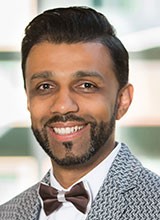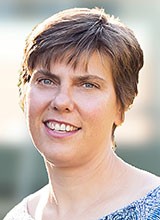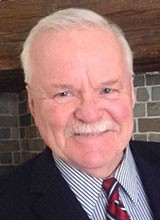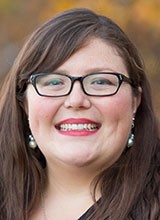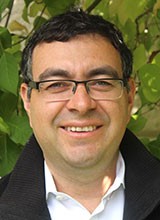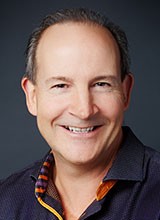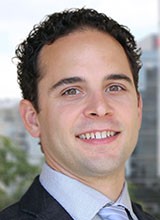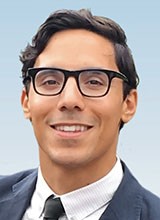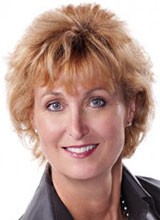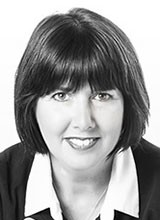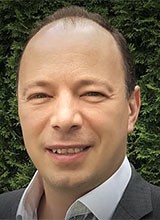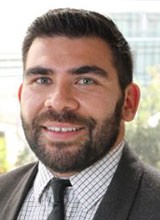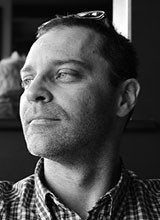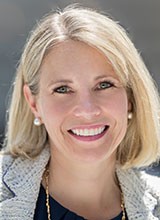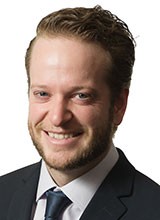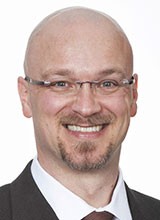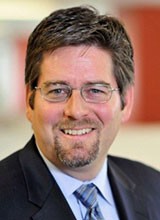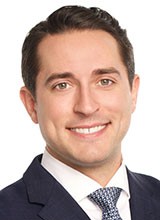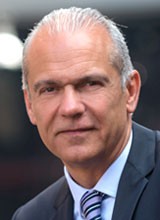2018 BUILDEX Edmonton Program Day 2
Seminars have been approved for educational credits with:
To obtain educational credits, you will need to fill out available forms onsite and have them verified by conference staff. Details on how to submit credits are specified on forms.
Seminar Streams:
- Building Code & Envelope Solutions
- Building Performance, Energy Efficiency & Environment
- Legal, Regulatory & Risk Management
- New Products, Technologies, Innovations & Materials
- Professional & Personal Skills Development
- Project Planning, Management & Best Practices
- Health & Wellness
- Facility Management & Building Maintenance
- Property Management
- Business & Strategic Planning
- Urban & Community Planning
Wednesday, March 21 • 8:30am–10:30am • Early Bird $55/Regular $65 • ROOM 102
W01 – The Waltz of Light and Architecture
[Building Performance, Energy Efficiency & Environment; New Products, Technologies, Innovations & Materials; Project Planning, Management & Best Practices; Health & Wellness; Facility Management & Building Maintenance; Property Management]
[ BOMI 2.0 CPD • 2 AAA Structured Learning Hours • 2 General Hours IDCEC Approved ]
In the era prior to artificial light, living organisms followed the circadian rhythm. They woke when the sun rose and retired to shelter when the sun set. Their energy levels increased as the sky brightened and fell with the fading of light. People integrated with the daily cycle of the sun.
Buildings and fenestrations were positioned at ideal angles to capture the sun’s rays. Light danced off walls, floors and cast shadows in their wake. This performance occurred daily, the waltz of light and architecture became a comforting routine in people’s lives.
In modern times, an abundance of artificial, uncontrolled light has led to a disconnect between people and the natural rhythm of the sun and arguably of the passing of time over the course of the day. A space with limited glazing is a vacuum and occupant perception of time, weather and seasons is challenged – is it mid-morning or night, summer or fall? The contrast between interior and exterior is jarring, integration with the natural world is lost.
In this seminar, we explore means to integrate light and shadow back into the built environment, and welcome a return of the waltz of light and architecture.
Session Learning Objectives:
- Circadian Stimulus (CS) standards. Understand the parameters surrounding biological rhythms in a 24-hour period. Identify the health-related issues caused by disrupting circadian rhythms. Analyze the new metrics involved with this new standard.
- Right to Light. Comprehend how buildings were shaped to capture light and how this building massing allowed for light to be dispersed around its surrounding neighborhood. Identify key architectural achievements that applied the right to light philosophy and further explore how this ideology can be achieved in contemporary design.
- Light Integration into Architecture. Explore a case study at the University of British Columbia Student Union Building, where light is integrated into the architecture and becomes invisible. Identify the strategies involved with homogenizing light into architecture and understand the relationship of light levels within a spatial envelope.
- New Lighting Technologies. Learn how to make a windowless environment feel natural with artificial light. Identify new strategies and technologies in lighting such as luminaires and software that change color temperature, dim to warm light and artificial skylights that simulate sunlight.
Sunny Ghataurah
Trina Larsen
Speakers:
Sunny Ghataurah, P.Eng., P.E., CLD, CTS, LEED AP BD+C, President, AES Engineering
Trina Larsen, P.Eng., M.Sc., LEED AP BD+C, Senior Managing Associate, AES Engineering
As a Certified Lighting Designer (CLD) within the commercial building industry, Sunny Ghataurah and his firm AES Engineering have accumulated industry insights by working collaboratively with lighting manufacturers, the A&D community, developers and governments. They provide an independent perspective as they balance form, function, cost, and sustainability on lighting projects.
Sunny is a professional engineer licensed in BC, AB & Washington State, with more than 25 years of experience in the construction industry. His skills in designing electrical and architectural lighting systems have been applied to hundreds of buildings across the healthcare, education, hospitality, recreational, retail, and corporate office sectors. Sunny’s projects have won numerous awards, most recently a 2016 Special Citation and a 2015 Award of Excellence for Interior Lighting Design from the Illuminating Engineering Society of North America (IES).
His passion is sustainable design, and Sunny was one of the first to embrace its ideas. His portfolio includes more than 100 LEED projects, 3 Living Buildings and several renewable energy projects. Recognized as an industry thought leader, Sunny was invited to speak at the Alberta Electrical Inspectors Conference, BUILDEX Calgary, BUILDEX Edmonton, IES Edmonton and the Alberta Safety Codes Council.
Trina Larsen is an electrical engineer with a passion for lighting design and implementation. She is the Senior Managing Associate of AES’s Edmonton office. Trina has contributed to the Edmonton landscape with a portfolio focusing on the sustainable electrical design of new buildings, renovations and project planning for over 20 years. Trina loves being able to contribute to City place-making through projects as diverse as the Edmonton Funicular and exterior lighting policy development, from heritage building preservation to new landmarks like the Royal Alberta Museum, Kaye Edmonton Clinic and Sigmar Centre for Learning at NorQuest College. Trina relishes in the opportunity to bring diverse groups of people together toward a common goal – develop beautifully designed spaces that offer occupant comfort, ease of maintenance, and low energy consumption.
Trina holds a Bachelor’s Degree in Engineering Physics and a Masters Degree in Electrical Engineering, both from the University of Saskatchewan. She is a past president of Section 79 of the IESNA, and served on the IES commissioning committee for Design Guide 29-11. Several of her projects have received recognition with an IES Award of Merit.
Wednesday, March 21 • 8:00am–11:30am • Early Bird $125/Regular $150 • ROOM 103
W02 – The Risks Inherent in Planning for Project Success
[Legal, Regulatory & Risk Management; Project Planning, Management & Best Practices]
[ BOMI 3.5 CPD • 3.5 AAA Structured Learning Hours • 3.5 General Hours IDCEC Approved ]
Integrated project planning is a process and expertise-driven approach to ensuring project success. As project managers and leaders of high quality teams, we need to understand how the pieces of the product and project are connected and the risks involved. Through a collaborative and inclusive process, we can develop effective and well-designed plans that provide enhanced assurance of successful project completion.
In this session, attendees will learn about:
- The Project Manager’s key responsibilities throughout the project with a focus on project integration
- How to keep your key stakeholders and team committed throughout the project
- The six detailed processes critical to effective risk management
- The key elements of cost and schedule management
- How to apply practical RISK management techniques in the planning, tracking and monitoring the health of your project
Dr. Bud MacAulay Lush
Speaker:
Dr. Bud MacAulay Lush, MSc, PhD, MCSE, CSM, FRCPM, Chairman & Chief Technical Officer, Atocrates Project Sciences
Bud is a highly informative and entertaining speaker with over 30 years of management and technical consulting, mentoring, teaching and coaching focused on Leadership & Change, Strategy Execution, Creativity & Innovation, Project Management, Requirements Engineering & Management, and Team Development.
It’s Bud’s goal to inspire and equip individuals, teams and corporations to provide the most worthwhile experience to everyone they serve.
Bud is regularly ranked as one of the best and most engaging speakers in the field of Project Management, receiving high praise from past workshop and conference attendees.
Wednesday, March 21 • 9:00am–10:00am • Early Bird $35/Regular $45 • ROOM 107A
W03 – Edmonton’s Big Buildings: Energy Saving Opportunities & Benefits
[Building Code & Envelope Solutions; Building Performance, Energy Efficiency & Environment; Project Planning, Management & Best Practices; Facility Management & Building Maintenance; Property Management; Business & Strategic Planning]
[ BOMI 1.0 CPD • 1 AAA Structured Learning Hours • 1 HSW-Sustainability Hour IDCEC Approved ]
On June 5, 2017, Edmonton became the first Canadian municipality to launch a voluntary building energy benchmarking program. This program will lay the foundation for Edmonton's transition to a low-carbon, sustainable energy future by making building energy performance more accessible. As part of Edmonton's Community Energy Transition Strategy, the program aims to compile and compare annual, whole building energy consumption across Edmonton's large building stock - information that will be used to benchmark building energy performance, facilitate energy efficiency improvements and greenhouse gas reductions. Similar programs across North America have proven the value of this approach for those involved, and now they are gaining considerable momentum in Canada.
In this session audience members will be introduced to Edmonton's Building Energy Benchmarking Program including an in-depth summary of the first-year pilot program results, building success stories and details on the benefits of participating. Guests will learn about new financial and non-financial incentives being offered by the City of Edmonton (as well as other organizations) that encourage energy efficiency within Edmonton's large buildings. Additionally, the presentation will highlight other City of Edmonton programs working to support the commercial sector in their energy transition such as Edmonton's Corporate Climate Leaders Program.
Lisa Dockman
Speaker:
Lisa Dockman, Energy Transition Project Manager, City of Edmonton
Lisa Dockman is Senior Environmental Project Manager working in the Energy Transition Unit at the City of Edmonton. Her focus is on planning and implementation of programs aimed to mitigate energy use and greenhouse gas emissions associated with Edmonton's large buildings.
Lisa is a University of Alberta graduate of both the Faculty of Science and the Faculty of Education, in addition to holding a certificate in Community Service Learning. Previously, she worked at the University of Alberta's Office of Sustainability leading sustainability-related educational programs and capacity-building initiatives for students, faculty and staff. She has over 10 years of experience planning, implementing and evaluating strategic planning and change management campaigns in both not-for-profit and post-secondary environments. Lisa is passionate about collaborative strategic planning, facilitating engagement in sustainability initiatives and equipping people with the capacity to accomplish sustainable change.
Wednesday, March 21 • 9:00am–10:30am • Early Bird $45/Regular $55 • ROOM 108
W04 – Northern Climate Passive House Institutional Building: Valley View Town Hall
[Building Code & Envelope Solutions; Building Performance, Energy Efficiency & Environment; Project Planning, Management & Best Practices; Health & Wellness]
[ BOMI 1.5 CPD • 1.5 AAA Structured Learning Hours ]
Passive House is a demanding standard and achieving it in northern climates has been thought to be challenging. What are those challenges? How are they overcome? Come and hear the story of Valley View Town Hall, the first institutional Passive House building in Alberta.
Oscar Flechas
Speaker:
Oscar Flechas, Flechas Architecture
Oscar is an Architect with a broad range of experience in various sectors and on different scale projects. His firm, Flechas Architecture, is a progressive, small and young studio that uses simple and creative design solutions to produce innovative, environmentally and socially responsible results. He’s an early adopter of the Passive House standard, and his firm now strives to design buildings that meet or use the principles required by the standard in each of the projects. Passionate about low-energy and low carbon buildings for the future generations, Oscar is one of the few architects certified as Passive House Designer in Alberta and embraces most tools that encourage better building standards to help achieve greener buildings in Canada.
Wednesday, March 21 • 10:00am–11:00am • Early Bird $35/Regular $45 • PerformEX Stage
W06 – Acoustic Value Engineering
[Building Code & Envelope Solutions; Building Performance, Energy Efficiency & Environment; Project Planning, Management & Best Practices; Health & Wellness; Facility Management & Building Maintenance; Property Management]
[ BOMI 1.0 CPD • 1 AAA Structured Learning Hours ]
Designing and constructing a new facility or renovating an existing facility is exciting and the finished structures are looking as good or better than the drawings after completion. Acoustics are critically important in these large open spaces given the use of high ceilings and hard flooring as hearing is the next sense we use after enjoying how great something looks. This presentation will focus on common acoustic treatment options, their relative cost/value, their constructability, and the safety/liability risks associated with each of them.
James Teppan
Speaker:
James Teppan, P.Eng., President, Western Noise Control
James has 31 years of operational, marketing, and executive level experience as a professional engineer in the manufacturing and construction industries. He has been fortunate to experience everything from being responsible for the construction of a large petrochemical facility to running 3 multi-faceted manufacturing, construction, and services businesses. He is now President of Western Noise Control which is part of the Engineered Controls Group of Companies. James' commitment to value engineering and root-cause analysis has helped his teams minimize costs while maximizing value.
Wednesday, March 21 • 11:00am–12:30pm • Early Bird $35/Regular $45 • ROOM 108
W08 – Passive House as a Road to Net Zero
[Building Code & Envelope Solutions; Building Performance, Energy Efficiency & Environment; Project Planning, Management & Best Practices; Facility Management & Building Maintenance]
[ BOMI 1.0 CPD • 1.5 AAA Structured Learning Hours ]
Around the world, policy makers and institutions have established targets for Net Zero building construction. But how do we get there? Space heating continues to comprise the majority of energy consumed by our buildings, despite gains in the efficiency of mechanical systems. Designing building envelopes that keep heat from escaping in the first place is the next step in significantly reducing energy consumption in buildings, in turn resulting in building energy demand that can more feasibly be met by renewables. The Passive House Standard provides a roadmap for this improvement.
Clayton Bond
Brenden David
Speakers:
Clayton Bond, P.Eng, CCP, LEED AP BD+C, Manager, Sustainable Design
Brenden David, Project Engineer, Building Science, WSP Canada
Clayton Bond joined WSP in 2012 and provides design, construction and operations support for sustainable and energy efficient buildings. Clayton has more than 13 years of engineering experience in the design, construction, and commissioning of high performance systems for buildings and industrial process equipment. His background in building construction allows a practical approach to identifying, understanding and resolving issues. He works on projects across Alberta and leads the Edmonton team in building energy performance, sustainability and commissioning.
Brenden David graduated from the Civil Engineering program at University of Calgary’s Schulich School of Engineering. First focusing on materials testing and construction review, he found his way to the field of building science through restoration and repair projects with WSP in Vancouver. Passionate about sustainable design, building performance, and craftsmanship, Brenden was driven to focus on the Passive House Standard. He recently moved with WSP to Calgary where he continues to help clients maintain their building portfolios, while proceeding to take on more projects as a Certified Passive House Designer.
Wednesday, March 21 • 11:00am–12:00pm • Early Bird $35/Regular $45 • ROOM 109
W09 – Interior Design Keynote: The Measure of Space and How it Makes us Feel
[Building Performance, Energy Efficiency & Environment; Professional & Personal Skills Development; Project Planning, Management & Best Practices; Health & Wellness; Facility Management & Building Maintenance; Property Management; Business & Strategic Planning]
[ BOMI 1.0 CPD • 1 AAA Structured Learning Hours • 1 General Hour IDCEC Approved ]
Historically, there have been various ways to measure how well the design of an interior space “works.” In a volatile economy, the metric may be the ability to fit as many people and desks into as little real estate as possible. Humanizing or stylish touches may have to go. Such determinants have a rightful place among the tenets of design, but it is certainly possible to reconcile economic necessities with design that’s intelligent, interesting and human-centered. Every element of interior design—the shape of the space, the color of walls, the arrangement of furniture—is laden with messages. Each speaks to certain values. Each gives cues for behavior. Taken together, they suggest and invite a way of working, learning or socializing. The visual language of the space communicates and informs, often evoking an emotional response and potentially leading us to pass a verdict on the nature of the enterprise that shaped it.
This session will focus on the elements of interior design and how that may be used to create a more positive experience, to create more happiness at work. The presentation will range across types of spaces one encounters in the modern office over the course of a work day, and proposes that feeling welcome, empowered, connected, calm and comfortable helps people to do their best work. Equally, companies that seek to become skilled in leveraging the power of design, that use design to engage and inspire, often find workers a great deal more likely to exhibit creativity, commitment, and a spirit of community. Whatever the prevailing aesthetic model of design, and however complex the concerns and constraints that designers must address, we have a great opportunity to put beauty and meaning into the everyday work environment. We have a chance, and even a mandate, to improve people’s lives. That, in essence, is the story of design.
Jennifer Busch
Darren Gee
Crystal Graham
Michele Roach
Moderator:
Jennifer Busch, Vice President, A&D, Teknion
Panelists:
Darren Gee, Interior Designer, DIALOG
Crystal Graham, Principal, Kasian Architecture Interior Design & Planning
Michele Roach, Principal & Licensed Interior Designer, Wolski Design Group
Jennifer Busch, Hon. IIDA, is Vice President A&D at Teknion, where she is responsible for the development of key business relationships and sales and marketing strategies for major architecture and interior design firms throughout North America.
Jennifer came to Teknion from Interface, where she served as Vice President A&D Market Development for three years. Prior to joining Interface, she held various editorial positions at Contract magazine for 21 years, including servings as Editor in Chief from 1999-2011. At Contract, she routinely reported on the social, political, technological, economic, and business trends impacting the practice of commercial interior design, with a particular emphasis on design's influence on business and society, and its power to create positive change. In 2009 she was bestowed with Honorary IIDA status, the first design editor to have achieved such recognition. She has served on the Advisory Boards of the FIT Sustainable Interior Environments Master’s Degree program and the FIT Interior Design program.
Throughout her career, Jennifer has participated in the development and organization of key industry events and trade shows, has served as a jury member for numerous industry competitions, has had many speaking engagements as either a moderator or featured speaker, and has served as a guest critic for student work at several academic institutions. At Teknion, she manages a team of knowledge and product application experts, while continuing to promote the value of good design to commercial and institutional enterprises with real business goals.
Jennifer graduated from Washington University in St. Louis with a Bachelor’s degree in English, and from Indiana University with a Master’s degree in Journalism.
Wednesday, March 21 • 11:00am–12:00pm • Early Bird $35/Regular $45 • ROOM 102
W10 – Chaos Problem? How to Produce a Meaningful Organizational Change in the Chaos of Today
[Professional & Personal Skills Development; Project Planning, Management & Best Practices; Business & Strategic Planning]
[ BOMI 1.0 CPD • 1 AAA Structured Learning Hours • 1 General Hour IDCEC Approved ]
Today change is no longer constant, it is speeding up. Technology has now empowered many business models to be more competitive and disrupt others. Futurists are predicting this to continue at a faster and faster pace as people become more connected creating increasingly powerful tools.
Running a business today is extremely challenging. Time and capital are finite. Business decisions are getting tougher with less time to gain returns on the investment needed to put them into action. Mistakes get very costly and the implications can be far-reaching. Technology, competitors, customers, employees, suppliers, industries, and government policies are all putting pressure on the economic factors that a business must balance to be profitable.
This poses some challenges and threats for small to medium organizations: How do you keep up? Are you an executive or business owner? How do you get the perspective, advice, and mindset to achieve meaningful results in the chaos of today? Do you have an organization that is adapting and resilient to these factors? How do you decide what to implement action with and what to ignore?
Learn how top organizations are getting in front of change and learning to thrive in the chaos of today. Learn the four fundamentals you must master to keep ahead of change.
Jeffery Eschak
Speaker:
Jeffery Eschak CPA, CMA, President, Blue Onyx Growth & Leadership Advisors Inc.
Jeffery Eschak CPA, CMA - Specialized in Growth, Leadership, and Results
After 20+ years of leading and creating success in small and large business, Jeff founded Blue Onyx Growth & Leadership Advisors Inc. to help solve business challenges that exist today for small to medium companies. Jeff is partnered with Renaissance Executive Forums to deliver Peer Advisory Forums with Top Executives in Alberta.
Jeff's success as a Growth Agent is evidenced by the following sampling of past strategic projects:
- 1.5x Growth in 12 months - general revenues bounce back growth during an economic downturn
- 3.5x Growth in 18 months - complete turnaround of a failing sales operation
- 8.5x Growth in 60 months - development of an under-performing vertical market
- 10x Growth in 36 months - strategies that jumped revenue of a sluggish product category
Jeff provides a unique Leadership Perspective. As a relentless learner of modern yet proven leadership practices, Jeff builds employee engagement, accelerates quality strategic decisions, and improves alignment of organizational accountability.
Jeff ensures that advances in growth and leadership turn into Meaningful Results. With Jeff being a CPA, CMA Chartered Accountant, he maintains an eye on the numbers and ensures that the results are found in the income statement and balance sheet. But not all results are measured on the statements; some results come in the form of increased quality of and quantity of family time, some increased impact on the community or some as sustainable success that means something to the business and its employees.
Wednesday, March 21 • 11:30am–12:30pm • Early Bird $35/Regular $45 • PerformEx Stage
W11 – What Now? One Year of Energy Code and Beyond
[Building Performance, Energy Efficiency & Environment; New Products, Technologies, Innovations & Materials; Project Planning, Management & Best Practices; Facility Management & Building Maintenance; Property Management; Business & Strategic Planning]
[ BOMI 1.0 CPD • 1 AAA Structured Learning Hours • 1 HSW-Building Code Hour IDCEC Approved ]
After a year of NECB 2011 this presentation will highlight trends for good and bad. Presenting the challenges and opportunities that the code has presented, the speakers will expand on how we, as industry professionals, can do better. The presenters will conclude with an overview of what is coming next for energy codes and high performance buildings in Edmonton and Alberta.
Juan Monterrosa
Justin Pockar
Speakers:
Juan Monterrosa, Senior Engineer, Green Building and Energy Code, City of Edmonton
Justin Pockar, Energy & Environment Coordinator, City of Calgary
Juan Monterrosa is the Senior Engineer for Green Buildings and Energy Code at the City of Edmonton. He has over of 10 years of experience working in energy from source to end use. As a LEED Accredited Professional and a Certified Passive House Consultant he has a strong focus on energy efficiency and load reduction. With a passion for high performance building design Juan is supporting the implementation of new energy codes, green building innovations and reducing barriers to green buildings. With a vision of reducing the carbon emission from buildings for the City of Edmonton he looks to build connections between builders, the municipality and the sustainability community.
Prior to joining The City of Calgary Justin worked as a consultant, completing several projects certified to LEED Gold or better. As Energy and Environment Coordinator for Planning & Development, current responsibilities include administration and integration of sustainable design policies and technology into the approvals processes and built environment. Active participation with the National Research Council of Canada has led to roles as reviewer and author of the National Energy Code of Canada for Buildings (NECB), and contributing volumes for both ASHRAE and BIM Canada publications.
Wednesday, March 21 • 12:30pm–2:00pm • Early Bird $35/Regular $45 • ROOM 102
W12 – GO Fish – Using Strategy Visualization Tools for Better Discovery, Understanding and Problem Solving
[Professional & Personal Skills Development; Business & Strategic Planning]
[ BOMI 1.5 CPD • 1.5 AAA Structured Learning Hours • 1.5 General Hours IDCEC Approved ]
If you work in design, marketing or sales, you are paid for your ability to offer great solutions. And isn't it tempting to leap to the end, and offer your creative ideas? But the greatest value is often found in the beginning of the relationship. Do you want to create more effective solutions and be better paid for your work? Improve two steps of your Design Thinking -- how you Empathize with the situation, and how you Define the problem.
GO FISH is an exciting and engaging deep dive into the waters of Design Thinking and Strategic Visualization.
In this 90-minute workshop you will learn and experience effective methods that include:
- From cold to hot - how to get minds engaged
- Tools for discovery - how to empathize more deeply
- Ishikawa (FISH) diagramming for defining problem causes
Annette Barrelet
Douglas Trudeau
Speakers:
Annette Barrelet, Manager, Workplace Strategy, Teknion
Douglas Trudeau, Manager, Program Development, Teknion
Annette Barrelet is Manager, Workplace Strategy at Teknion. She is a professional facilitator who engages customers on topics that include visioning, co-design, change planning, innovation and workplace effectiveness.
Douglas Trudeau is Manager, Program Development at Teknion. He develops and leads user-centered workshops that focus on uncovering human needs and translating them into workplace observations + insights. He works with his teams and clients to simplify the complex, with an empathetic lens.
Wednesday, March 21 • 12:30pm–1:30pm • Early Bird $35/Regular $45 • ROOM 107A
W13 – Broadening the Sustainable Design Discussion – Biophilia, Beauty and Fitness
[Building Performance, Energy Efficiency & Environment; Professional & Personal Skills Development; Project Planning, Management & Best Practices; Health & Wellness; Facility Management & Building Maintenance; Property Management; Business & Strategic Planning]
[ BOMI 1.0 CPD • 1 AAA Structured Learning Hours • 1 Health, Safety, Welfare Hour IDCEC Approved ]
As employers seek to attract and retain top talent, they are beginning to embrace more holistic concepts of wellness in the design of their workplaces. Discussions have emerged around designing for biophilia (the human-nature connection), beauty and fitness, and although designers have been applying this thinking for years, the strategies are just now becoming more formalized and explicit. The chatter is often loudest in sustainable design circles, with the release of new standards such as WELL.
This session will discuss what it means to create a building or space that nurtures the human-nature connection, how to promote occupant fitness through design, addressing why this is an important part of the sustainability conversation. This seminar will be co-presented by sustainability and design professionals, to provide a balance of theory and practice.
Ben Campbell
Angela Mok
Speakers:
Ben Campbell, Project Manager and Technical Lead, WSP Canada Inc.
Angela Mok, Interior Designer, Kasian Architecture Interior Design and Planning
Specializing in new and existing commercial buildings, Ben Campbell’s experience encompasses over 50 sustainability projects. Along with confident problem-solving skills afforded by an extensive background in mathematics, Ben’s diverse interests extend to economics and the physical and life sciences. With experience studying and volunteering internationally, Ben approaches problems in sustainability from an interdisciplinary perspective.
Angela Mok is a registered Interior Designer and holds a Bachelor of Applied Interior Design Degree from Mount Royal University. She brings seven years of professional experience working across corporate, hospitality, institutional and commercial sectors. Involved in all project phases, Angela works with clients to ensure vision and goals are carried through from the preliminary design concept to final construction. She assists in creating design concepts, presentations, specifications, and tender packages.
Wednesday, March 21 • 2:00pm–3:00pm • Early Bird $35/Regular $45 • ROOM 108
W14 – Flood and Other Severe Weather Risks – How Does the Insurance Industry View These Situations
[Building Performance, Energy Efficiency & Environment; Legal, Regulatory & Risk Management; Project Planning, Management & Best Practices; Health & Wellness; Facility Management & Building Maintenance; Property Management, Business & Strategic Planning; Urban & Community Planning]
[ BOMI 1.0 CPD • 1 AAA Structured Learning Hours ]
The risk of flood is not a new risk to Canadians. The way the insurance industry responds to overland flood is evolving. The frequency and severity of natural disasters is on the rise, evidenced by BC wildfires, flooding in Ontario and Quebec and who could forget the images of the devastation just south of our border. What can we do as builders, land planners, developers, government and even the insurance industry to mitigate and better prepare for these risks. We have become better at responding to these events, but can we be even more resilient before disaster strikes? Hear from Insurance Bureau of Canada on the way the insurance industry views these risks and what is being done to mitigate, prevent and prepare for the next emergency that is on the horizon.
Rob de Pruis
Speaker:
Rob de Pruis, Director, Consumer and Industry Relations, Western, Insurance Bureau of Canada
With 25 years of experience in the insurance industry, Rob de Pruis has held various senior management roles in the areas of claims and risk management for some of the leading insurance companies in Canada. Rob joined IBC in May 2016 as the Insurance Industry Claims Liaison where he served as the primary claims liaison for the insurance industry in Fort McMurray and was instrumental in facilitating insurance assistance to those impacted by the wildfire. In his new role as Director, Consumer and Industry Relations, Rob directs the activities of the Consumer Information Centre for the Western and Pacific region. He acts as a liaison between IBC’s member companies and consumers to find negotiated solutions on issues that impact both parties. He also provides insight on insurance to consumers and facilitates collaboration between industry and relevant stakeholders. Rob has achieved the following professional designations: Fellow, Chartered Professional (FCIP), Claims Major, with Honours; Chartered Insurance Professional (CIP); Canadian Risk Management (CRM); Canadian Personal Property Appraiser (CPPA); Associate, Canadian Condominium Institute (ACCI), specializing in Insurance; and Associate Customer Service (ACS). He also has a Law Enforcement and Security Diploma from MacEwan University. A former President, Arbitration Chair and Treasurer of the Northern Alberta Chapter of the Canadian Insurance Claims Managers Association, Rob has been a guest lecturer for the Insurance Institute of Northern Alberta, Insurance Institute of Canada and MacEwan University.
Wednesday, March 21 • 12:30pm–4:00pm • Early Bird $125/Regular $150 • ROOM 103
W15 – The Risks Inherent in Delivering Promised Value & Benefits
[Professional & Personal Skills Development; Project Planning, Management & Best Practices; Business & Strategic Planning]
[ BOMI 3.5 CPD • 3.5 AAA Structured Learning Hours • 3.5 General Hours IDCEC Approved ]
Critical to the success of projects is an ongoing rigorous integrated risk assessment and management process. Though not all processes, procedures, or functions perform as expected, your experience, along with this pre-defined risk assessment and management process, will enable you to factor in all current possibilities and work closely with your extended team to execute the plan and to implement contingencies as necessary. The pre-defined risk assessment and management processes will enable you and your team to deliver the value and benefits assured at the start.
Learn about:
- The development of a building project for better results
- The definition of project governance – benefits realization
- The golden rules of project risk management
- The most effective strategies and techniques to use to avoid problems and mitigate risk
- What to look for and what questions to ask to get a true picture of the status of your project(s)
- The life cycle cost of building ownership
- A comparison of traditional practice and value management
- best practices for implementing value engineering in design-build
- Value engineering and sustainability
Dr. Bud MacAulay Lush
Speaker:
Dr. Bud MacAulay Lush, MSc, PhD, MCSE, CSM, FRCPM, Chairman & Chief Technical Officer, Atocrates Project Sciences
Bud is a highly informative and entertaining speaker with over 30 years of management and technical consulting, mentoring, teaching and coaching focused on Leadership & Change, Strategy Execution, Creativity & Innovation, Project Management, Requirements Engineering & Management, and Team Development.
It’s Bud’s goal to inspire and equip individuals, teams and corporations to provide the most worthwhile experience to everyone they serve.
Bud is regularly ranked as one of the best and most engaging speakers in the field of Project Management, receiving high praise from past workshop and conference attendees.
Wednesday, March 21 • 1:00pm–2:00pm • Early Bird $35/Regular $45 • PerformEx Stage
W16 – Measure Twice, Cut Once: Building Automation Systems & HVAC Controls Commissioning – Best Practices for Design and Implementation
[Building Performance, Energy Efficiency & Environment; Project Planning, Management & Best Practices; Facility Management & Building Maintenance; Property Management]
[ BOMI 1.0 CPD • 1 AAA Structured Learning Hours ]
Your Building Automation System (BAS) is the most important 'piece' of equipment in your building. It is becoming increasingly important to ensure building automation designers, building owners, and controls commissioning teams have access to current tools, and are well versed in industry best practices related to BAS design and implementation. A well-designed BAS system will ensure the final quality and value of a building while improving and simplifying ongoing operations and maintenance procedures.
The discussion will provide an overview of BAS systems as a technology platform by which owner's project requirements for energy efficiency, sustainability, and occupancy conditions are to be monitored, controlled, and tracked over the lifetime of a building.
Lastly the discussion will explore real world approaches, and areas for improvement, in the standardization, design, specification, and commissioning of BAS systems for HVAC control and energy management applications. It will also explore the impact of the internet on the BAS design and specification process.
Edward (Ted) Cook
Mike Edwards
Speakers:
Edward (Ted) Cook, Senior Account Executive, Automated Logic – Canada Ltd.
Mike Edwards, Service Area Manager, Alberta, WSP Canada
Ted draws from his years of experience as contractor, consultant, and entrepreneur in his approach to each and every project. "If you don't have a good understanding and appreciation for the impact your decisions have on the end result and the bottom line then how can you be confident in your work?"
Ted is a Senior Account Executive at Automated Logic Canada with twenty-five years of experience in the HVAC industry specializing in Building Automation System (BAS) design, implementation, and sales. Ted has experience in many different facility types including educational, office, retail, residential, telecom and data centres throughout Alberta, BC, and Ontario, as well as in Seattle, Chicago, and New York City.
Mike Edwards has experience implementing and managing the commissioning and retro-commissioning process on a variety of new commercial, institutional, health care, educational, and residential construction projects. This has included the provision of technical guidance and direction through design reviews, shop drawing reviews, controls reviews, site reviews and functional controls testing to optimize energy performance and ensure owner's requirements are met. Michael is also experienced in a wide variety of responsibilities related to sustainable building design, construction, LEED® green building certification, Building Automation System (BAS) retrofits and upgrades, and municipal sustainability master planning projects.
As the Service Area Manager, Alberta Building Performance, Mike is responsible for building business and WSP's reputation in the new building commissioning, existing building commissioning, and sustainable building services markets here in Alberta.
Mike is a professional Mechanical Engineer and LEED AP with 8 years of experience in sustainable building services. Prior to his time with WSP Group, Mike worked as a project manager and commissioning specialist for Enermodal Engineering and MMM Group Ltd.
Wednesday, March 21 • 2:00pm–3:00pm • Early Bird $35/Regular $45 • ROOM 109
W17 – CLOSING KEYNOTE: The Buildings of the Future are Zero Carbon: How Green Buildings Can Meet Carbon Emissions Targets
[Building Code & Envelope Solutions; Building Performance, Energy Efficiency & Environment; Legal, Regulatory & Risk Management; New Products, Technologies, Innovations & Materials; Professional & Personal Skills Development; Project Planning, Management & Best Practices; Health & Wellness; Facility Management & Building Maintenance; Property Management; Business & Strategic Planning; Urban & Community Planning]
[ BOMI 1.0 CPD • 1 AAA Structured Learning Hours • 1 Health, Safety, Welfare Hour IDCEC Approved ]
Canada has set ambitious targets for greenhouse gas emissions reduction which can only be met through concerted efforts in the building sector as one of the largest contributors to climate change. Over the last ten years, Canada has moved into a global leadership position through innovation and investment in LEED certified green buildings. As we move toward a carbon-constrained future, the conversation in building design and retrofit must shift from ‘energy efficiency’ to ‘carbon’ to ensure we arrive at the best solutions. The CaGBC’s new Zero Carbon Building Standard uses carbon as the key metric in assessing building performance and combines this measure with enhanced envelope performance and renewable energy options. To date, 16 pilot projects representing different building types, sizes and locations have signed on to be the first projects to achieve Zero Carbon Certification. Zero Carbon represents the next cycle of innovation in green building continuing Canada’s global leadership in taking tangible steps in reducing carbon emissions from buildings.
Thomas Mueller
Speaker:
Thomas Mueller, MA, Hon FRAIC, LEED AP, President & CEO, Canada Green Building Council
Thomas Mueller is a Founding Director of the Canada Green Building Council (CaGBC) and became President & CEO of the Council in 2005. As Chief Executive, he leads the Council’s national green building strategy, programs and standards along with advocacy and policy initiatives.
As a member of the Board of Directors of the Green Building Certification Institute (GBCI) and the Cornerstone Standards Council (CSC), and as a past Board member of the World Green Building Council (WGBC), he supports the transition toward green building, neighbourhoods and cities at home and globally.
Thomas is a well-known advocate for green buildings and sustainable community development. He participates frequently in government and industry consultations on green development and is a nationally and internationally recognized authority and speaker on green buildings.
He is currently participating in several initiatives and groups including the WorldGBC Global CEO Network, the Advisory Board of CIRS (Centre for Interactive Research on Sustainability), and the Advisory Committee of Energy Efficiency in BC’s Built Environment Research Project at UBC.
Thomas has an Undergraduate Degree in Geography, Planning and Applied Ecology from the Ludwig-Maximilian University in Munich, Germany; and holds a Master’s Degree in Regional Planning & Resource Development from the University of Waterloo, Ontario.
For his green building work, Thomas has received numerous awards. Most recently, he became a recipient of Canada’s 2015 Clean50 Award and an Honorary Fellow of the Royal Architectural Institute of Canada (RAIC) in 2016.




